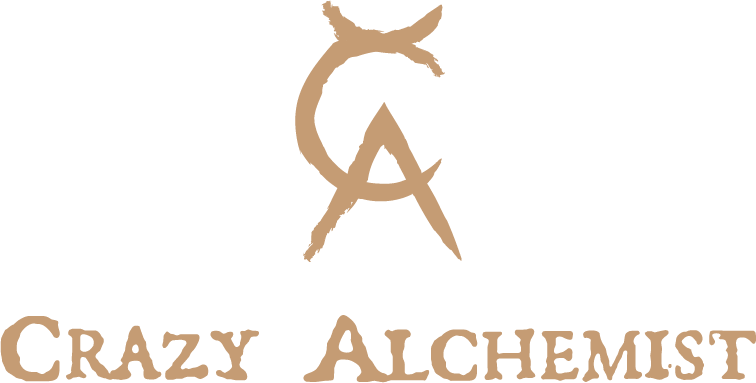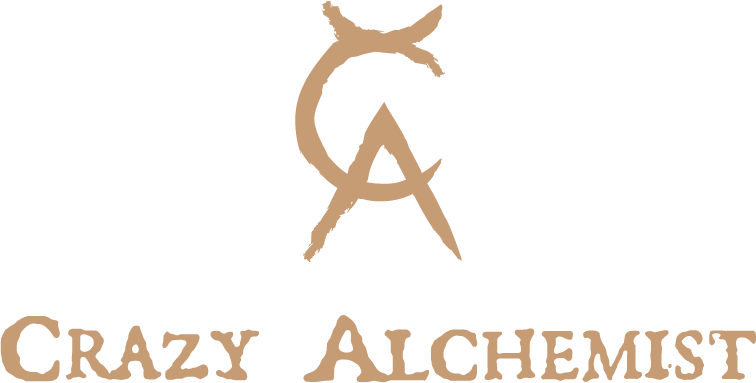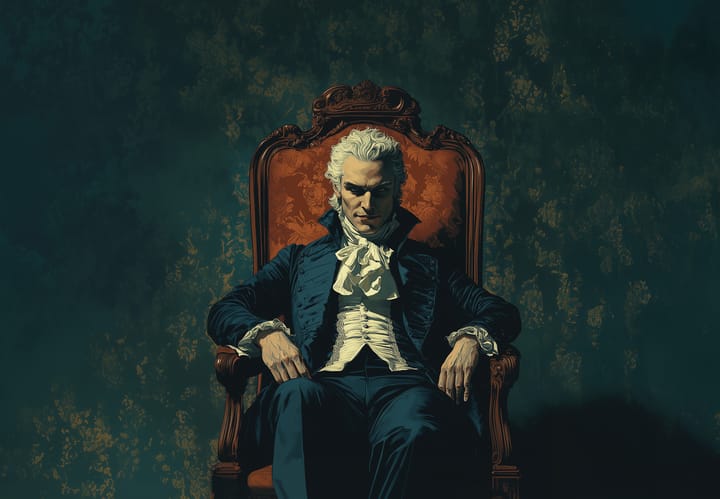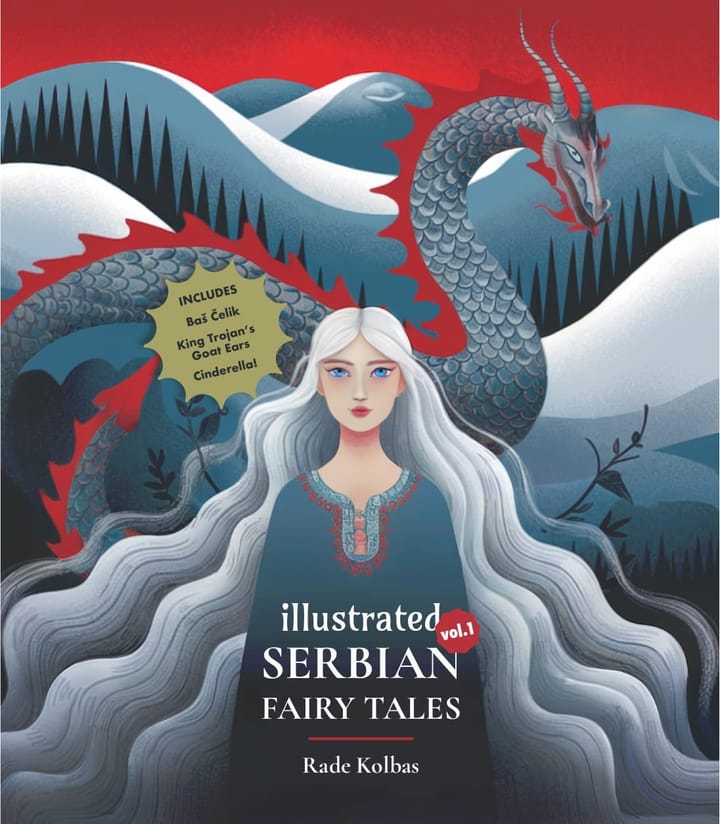Slavic Sorcerers in Old Serbian Fairy Tales
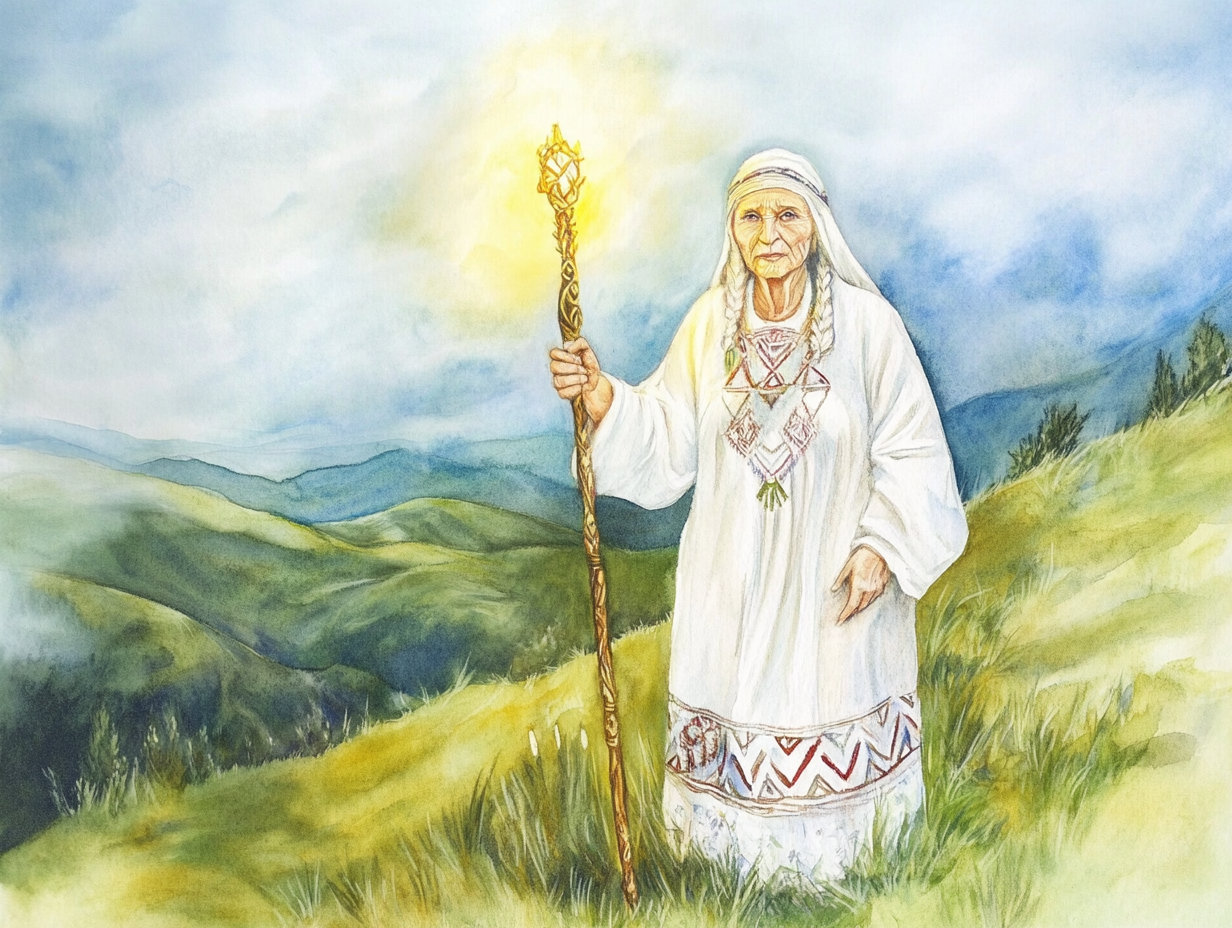
The Serbian fairy tales of the 19th century, collected by researchers such as Vuk Stefanović Karadžić, Đorđe Kojanov Stefanović, and S. Novaković, provide insight into Slavic folk mythology. Particularly fascinating are the figures of sorcerers – old men and women with supernatural abilities, depicted as wise, powerful, or divine. This analysis examines four such figures from the stories Radovan and Slavojka, Sun’s Mother, The Man with the White Beard, and Friends and the Old Woman. The aim is to explore their roles, characteristics, and cultural contexts, drawing parallels to other traditions and modern interpretations.
1. The Old Man in Radovan and Slavojka
In Radovan and Slavojka, collected by Đorđe Kojanov Stefanović, an old man appears as a central magical figure. He meets Radovan under a giant fir tree, possessing supernatural knowledge and the ability to grant magical gifts.

Tale and Quote
Radovan, the son of King Milovan, is sent on a journey by a heavenly call. In the forest, he meets the old man who already knows him:
“The old man said: ‘What are you saying, my son? That we have never met before? We have known each other for a long time, my child. You just don’t remember me. You should know that three nights ago, during your father’s celebration, I called out: Milovan, send your son Radovan to the neighboring countries.’“
The old man sends Radovan to a dragon, gives him a golden jar, and later rewards him with a white horse, a dog, and a falcon, summoned by kissing dragon feathers.
Recording
Collected by Đorđe Kojanov Stefanović, published in 1871 in Serbian Folk Tales, Novi Sad.
Analysis and Comparison
The old man exhibits traits of a Slavic protective spirit or divine guide. His ability to know Radovan’s name and equip him with magical animals suggests a link to Slavic gods like Veles, lord of the underworld and magic, or Perun, the thunder god often associated with falcons. The dragon encounter recalls the bogatyr from Russian byliny, such as Dobrynja Nikititsch, who slays dragons. Unlike them, Radovan does not kill the dragon but uses its feathers – a sign of a more peaceful Slavic mythology.
Compared to other cultures, he resembles the Greek mentor Nestor or the Norse Odin, who distributes knowledge and gifts. Modern portrayals, like Gandalf in The Lord of the Rings, reflect this archetype: a wise old man guiding the hero, though without direct divine connotations.
2. The Sun’s Mother
In Sun’s Mother, collected by Vuk Stefanović Karadžić and published in 1870 in Serbian Folk Tales (Vienna), the Sun’s Mother appears as an old woman with healing powers. She revives a dead girl using herbs.

Tale and Quote
A girl, originally a basil plant, is killed by jealous women. An old woman finds her:
“An old woman passing through the forest found the lifeless girl and was moved by her beauty. Gathering some herbs, she brought her back to life. This old woman was the Sun’s Mother.”
The girl stays with her until the prince finds her, and the old woman is later honorably buried.
Recording
Collected by Vuk Stefanović Karadžić, published in 1870 in Serbian Folk Tales, Vienna. Available in Illustrated Serbian Fairy Tales Vol. 2 by Rade Kolbas.
Analysis and Comparison
The Sun’s Mother represents a maternal, healing force tied to the sun – a central symbol in Slavic mythology. She resembles the Slavic Mokosh, the earth mother offering fertility and protection, but with a more solar aspect. Her herbal knowledge points to the role of znaharka (healers) in Slavic villages.
She is comparable to the Greek Demeter, who gives life, or the Norse Frigg, who protects. In modern works, she recalls figures like the grandmother in Spirited Away, aiding with wisdom and magic but not claiming divine power. Her mortality sets her apart from immortal gods of other cultures.
3. The Man with the White Beard
In The Man with the White Beard, collected by S. Novaković and published in 1862, an old man with a white beard and golden staff appears. He indirectly saves a child and demonstrates shamanic abilities by communicating with spirits of the ground.

Tale and Quote
A shepherd warns a child about a snake, after which the old man appears:
“Then an old man with a white beard down to his waist appeared, holding a golden staff. The old man asked, ‘Why are you pacing?’ The shepherd explained how he had shouted to warn the child about the snake, but the child fell into the water from fright and might have drowned. The man with the white beard replied, ‘The child hasn’t drowned. That child is mine.’
He tests various spots by striking the ground with his staff and speaking to the spirits beneath: “He struck the ground with his golden staff and asked, ‘Land spirit, how much rent do you ask for a year if I build a house here?’ Something from the ground answered, ‘The lives of everyone in the house.’“ . He eventually finds a spot requiring only a clove of garlic.
Recording
Collected by S. Novaković, published in 1862 in Srpski Letopis za 1861, Budapest. Available in Illustrated Serbian Fairy Tales Vol. 1 by Rade Kolbas.
Analysis and Comparison
The man with the white beard is a shamanic figure with a deep connection to nature. His ability to converse directly with ground spirits recalls Slavic shamans, who mediate between humans and the unseen world. This suggests a link to deities like Veles, lord of the earth, or a domovoj (house spirit). His golden staff underscores his magical authority.
Similarities exist with Siberian shamanism, where nature spirits are consulted, or the biblical Moses, who performs miracles with a staff. Modern equivalents like Dumbledore from Harry Potter share the wise role, but lack the shamanic interaction with nature central here.
4. The Old Woman
In Friends and the Old Woman by Đorđe Kojanov Stefanović, an old woman with a golden staff and jeweled adornments appears. She blesses friends and teaches them about flowers and morals.

Tale and Quote
Young shepherds converse when the old woman arrives:
“The old woman said: ‘I want these snowdrops because they are mine, the flowers of the old mother! The merciful God and divine justice say, ‘What belongs to whom shall be to his honor!’ Remember what I tell you about the flowers of the Mother: when many snowdrops bloom early in the spring, there will be good harvests and full barns.’“
She accepts only snowdrops, distributes gems, and ascends to the sky.
Recording
Collected by Đorđe Kojanov Stefanović, published in 1871 in Serbian Folk Tales, Novi Sad.
Analysis and Comparison
This old woman embodies wise, maternal authority with prophetic abilities, akin to the Slavic Baba Yaga but gentler. Her link to snowdrops and harvests points to fertility deities like Mokosh. Her ascent to the sky suggests an angelic or divine nature.
She resembles the Roman Ceres, connecting harvest and morals, or the Irish Danu, a mother goddess. In modern portrayals, she recalls figures like the wise witch in The Chronicles of Narnia, who teaches and blesses, but is less complex than Baba Yaga.
Overall Comparison and Conclusion
Similarities and Differences
All four sorcerers are old, wise, and possess supernatural powers – knowledge, healing, communication with spirits, or blessing. They act as helpers, not adversaries, distinguishing them from ambivalent figures like Baba Yaga. The old man and Sun’s Mother are more individualized, while the man with the white beard and the old woman appear more archetypal. Their tools (golden staffs, herbs) and gifts (animals, gems) reflect Slavic nature ties.
Cultural Parallels
The figures share traits with Norse (Odin, Frigg), Greek (Nestor, Demeter), and Christian (angels, saints) beings. Unlike Western tales where sorcerers are often evil (e.g., witches in Grimm’s fairy tales), they are consistently positive here, reflecting the Slavic reverence for wisdom and age.
Gender Roles and the Term Vještica
A notable aspect of this mythology is that sorcerers are not exclusively male, as often portrayed in modern pop culture. Female sorcerers, like the Sun’s Mother and the old woman, wield golden staffs and exhibit a strong connection to magic and nature – a depiction rare in current culture. This may stem from the Middle Ages, where Christianity often cast women as evil witches. Lost over time is the positive image of wizards and witches. The Serbian word Vještica (witch) originally means “someone with many abilities” and was not negative. This meaning shifted, likely due to Christian influence demonizing female power and pagan believe.
Modern Relevance
In contemporary media, parallels exist with mentors like Gandalf or Dumbledore, yet the deep nature and community bonds of Slavic sorcerers, especially the positive female figures, are often absent. Their role as mediators between humans and the cosmos could enrich modern fantasy, perhaps through characters who not only wield magic but embody ecological wisdom.
